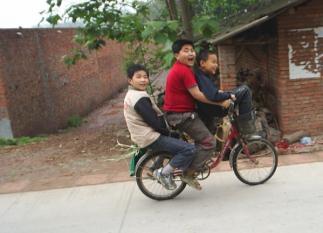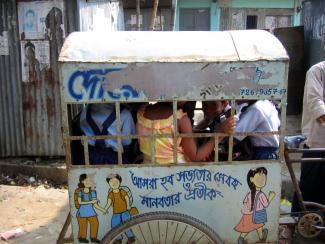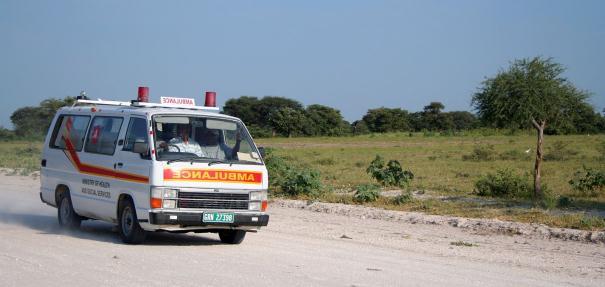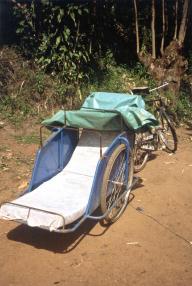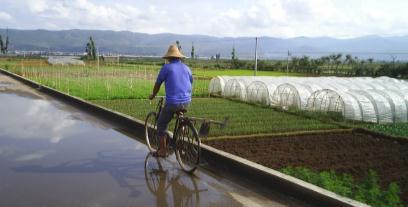Knowledge fuels change
For over a decade, Energypedia has shared free, reliable energy expertise with the world.
We’re now facing a serious funding gap.
Help keep this platform alive — your donation, big or small, truly matters!
Thank you for your support
Access To Basic Services and Accessibility of the Population
Overview
Success in tackling poverty depends to a crucial extent on the availability of basic services for the rural population. The principal benefit of improved rural transport infrastructure, and hence greater mobility, is that access to education, health care and agricultural advice services becomes possible or more affordable. Income-generating opportunities are opened up as a result of better access to markets where inputs such as fertilizer, seed and machines can be purchased and home-grown products – especially perishable goods such as fresh vegetables, fruit and milk – can be sold. It becomes possible to commute to jobs in rural centres that were previously out of reach. Transport therefore functions as a catalyst of economic and social development in rural areas, and it is closely linked to achievement of the Millennium Development Goals (see below). [1]
Education
There is extensive evidence of the importance of education in reducing poverty. In sparsely populated rural areas where getting to school – especially secondary school or college – involves travelling long distances, transport facilities and the costs of such transport are a crucial factor in school attendance. When plans are drawn up to improve access to schools, it is important to distinguish between different types of school. Primary schools have a relatively small catchment area: many pupils come on foot from the surrounding villages. In this case it is often more important to have safe paths that are usable all year round, and simple networks of paths, rather than a single well-constructed rural road. At secondary level and above the situation is different: pupils usually travel far greater distances to get to secondary schools and colleges. Here not only the infrastructure but also the availability and affordability of means of transport are crucial. Buses and pickups often make infrequent journeys and frequent travel is unaffordable for poor households. In many cases bicycles, motorcycles and other intermediate means of transport (IMT) are very important. [2]
Empirical studies have repeatedly shown that using transport interventions to make schools more accessible has a positive impact on school attendance rates. A study in Morocco in the 1990s found that providing a tarmac road increased school attendance from 21 to 48 per cent for girls and from 58 to 76 per cent for boys (Khandker, Lavy, Filmer 1994). It should be borne in mind that many other factors, including social status, affect school attendance, and that a high attendance rate is in itself no indicator of the quality of the education provided. But without a minimum level of accessibility any strategy to promote education in rural areas is bound to fail. [1]
Health
Similar considerations apply to access to health care. Rural transport infrastructure and service have influence on it in three different ways:
- They influence decisions about whether help for an individual can be accessed (as an alternative to self-treatment or no treatment at all).
- They define the maximum possible catchment area of a health clinic and hence the number, location and costs of such clinics.
- They determine the range of choice between different medical facilities and hence also influence the quality of health care.
One should consider the relative merits of steadily increasing the number of health institutions as opposed to expanding the catchment areas. Making clinics more accessible may sometimes be more efficient than building additional facilities and maintaining the high staffing levels that they require.
The increasing mobility of individuals and workers of the transport sector is often said to be the reason for the aggravation or spread of HIV/AIDS and other sexually transmitted diseases. On the one hand, transport may have contributed to the spread of these diseases, on the other hand interventions in the transport sector can also be useful for combating HIV/AIDS and other diseases. Responses have focused on educating and consultating transport workers and taking preventive measures such as distributing condoms to them, especially at transport infrastructure construction sites and major terminals. Persons infected with HIV/AIDS or other sexually transmitted diseases require visits to health facilities for treatment and access to antiretroviral drugs and getting visited by social and health-care workers, what in turn requires an affordable transportation system. [2]
Agricultural Advisory
In any strategy for promoting the economic development of rural areas, the agricultural sector is particularly important. This is partly in view of the availability of utilisable agricultural land and partly because of the direct use of agricultural products for human nutrition. Agricultural inputs such as fertiliser are not the only means of boosting agricultural productivity; innovation and knowledge gained from experience are also important, and both can be passed on through agricultural advice services. The accessibility of training, advice and information centres, and the costs of using them, are important factors in the decision-making process for farmers who are considering whether to invest in training and advice.
Conversely, the accessibility of farms is a factor that influences the costs of providing advice when a visit to the farm is needed. Better accessibility also significantly increases an individual farmer’s prospects of being able to partner with research institutes in the innovation process. It has also been shown that mobility increases access to innovation, technology and knowledge through the sharing of experience.[1]
Rural Transport and the Millenium Development Goals (MDGs)
The United Nations Millenium Development Goals (MDGs) are an agenda of the United Nations agreed upon at the Millennium Summit in September 2000 in order to reduce poverty and improve lives. The main focus of the goals is to make economic development more inclusive and to bring all people to a readily accessible set of basic standards of education and health. There is abundant empirical evidence (studies conducted by the Asian Development Bank, the Department for International Development of the United Kingdom of Great Britain and Northern Ireland, the International Food Policy Research Institute, the World Bank, the United Nations and other donor organizations) that transport has a significant role in poverty reduction and improving the general welfare of the people considering the access to a broad range of socio-economic opportunities and services and enhanced possibilities to work and increase productivity.
The findings show that investment in rural roads/access improvement can have a positive impact in five major areas:
- increases in total factor productivity in agriculture,
- shifts from subsistence farming to higher earning commercial farming,
- increases in rural wages,
- growth of non-agricultural employment and
- better social impacts through improved access to basic services. [2]
The following table gives an overview about the contribution of transport and traffic to the fulfillment of the MDGs.
Transport and the Millenium Development Goals[1][2]
| Goal |
Contribution/relevance of rural transport |
| 1 - Eradication of extreme poverty and hunger |
|
| 2 - Achieve universal primary education |
|
| 3 - Promote gender equality and empower women |
|
| 4 and 5 - reducing child mortality and improving maternal health |
|
| 6 - Combating HIV/AIDS, malaria and other serious diseases |
|
| 7 - Ecological sustainability |
|
| 8 - Develop a global partnership for development |
|
Further Information
Further and more detailed information can be found in the following publication of GIZ GmbH (Deutsche Gesellschaft für Internationale Zusammenarbeit) and KfW Bankengruppe: Schmid, D.; Bartholdi, M.; Moosmann, K; Czeh, A.; Engelskirchen, M.(2013): Erschließung ländlicher Räume - Der Beitrag von Verkehr zu ländlicher Entwicklung. Eschborn, Germany.
Further information on transport and MDGs:
- United Nations Economic and Social Council (2011): Emerging Issues in Transport; Transport and the Millenium Development Goals: www.unescap.org
- Africa, Transport and the Millennium Development Goals: Achieving an Internationally Set Agenda, Edited by Margaret Grieco, Muna Ndalo, Deborah Bryceson, Gina Porter and Talia McCray: cornell.edu
- Afrcian Development Bank, World Bank & European Union (2005): Transport and the Millenium Development Goals: worldbank.org
- Internatinoal Development Association (2010): Sustainable Transport for All: Helping People to Help Themselves. – IDA at work: www.worldbank.org
- IFRTD (The International Forum for Rural Transport and Development) 2005 Network Report - special focus on transport and the Millennium Development Goals. Edited by Kate Czuczman (2006):http://ifrtd.gn.apc.org/new/about/Annual_Report_en_2005.pdf
- UNESCAP (2006): Transport and the Millennium Development Goals. – Republic of Korea:http://www.unescap.org
Further information on transport and access to health care
- Muleta, M. & Abebe, S.(2008): Obstetric fistula and transport access to emergency obstetric care services in Sidama zone, Southern Ethiopia. – Addis Abeba : www.mobilityandhealth.org/case/MobilityandHealth_finalreport_Ethiopia_Fistula.doc
- Odere, K., Maganya, J. & Muguti, K. (2008): Linkages Between Mobility and Health: The Case of Suba District, Kenya. – Rwanda: www.mobilityandhealth.org/case/MobilityandHealth_finalreport_Kenya.doc
Further information on transport and gender
EngenderingDevelopment (o. J.): Making Rural Roads Work for both Women and Men: The Example of Peru’s Rural Roads Program.http://siteresources.worldbank.org/INTGENDER/Resources/PeruRRPFINAL.pdf
References
- ↑ 1.0 1.1 1.2 1.3 1.4 Schmid, D.; Bartholdi, M.; Moosmann, K; Czeh, A.; Engelskirchen, M.(2013): Erschließung ländlicher Räume - Der Beitrag von Verkehr zu ländlicher Entwicklung. Eschborn, Germany: GIZ GmbH (Deutsche Gesellschaft für Internationale Zusammenarbeit) and KfW Bankengruppe. Cite error: Invalid
<ref>tag; name "Schmid, D.; Bartholdi, M.; Moosmann, K; Czeh, A.; Engelskirchen, M.(2013): Erschließung ländlicher Räume - Der Beitrag von Verkehr zu ländlicher Entwicklung. Eschborn, Germany: GIZ GmbH (Deutsche Gesellschaft für Internationale Zusammenarbeit) and KfW Bankengruppe." defined multiple times with different content Cite error: Invalid<ref>tag; name "Schmid, D.; Bartholdi, M.; Moosmann, K; Czeh, A.; Engelskirchen, M.(2013): Erschließung ländlicher Räume - Der Beitrag von Verkehr zu ländlicher Entwicklung. Eschborn, Germany: GIZ GmbH (Deutsche Gesellschaft für Internationale Zusammenarbeit) and KfW Bankengruppe." defined multiple times with different content Cite error: Invalid<ref>tag; name "Schmid, D.; Bartholdi, M.; Moosmann, K; Czeh, A.; Engelskirchen, M.(2013): Erschließung ländlicher Räume - Der Beitrag von Verkehr zu ländlicher Entwicklung. Eschborn, Germany: GIZ GmbH (Deutsche Gesellschaft für Internationale Zusammenarbeit) and KfW Bankengruppe." defined multiple times with different content - ↑ 2.0 2.1 2.2 2.3 http://www.unescap.org/ttdw/MCT2006/Documents/English/MCT_SGO_7E.pdf

